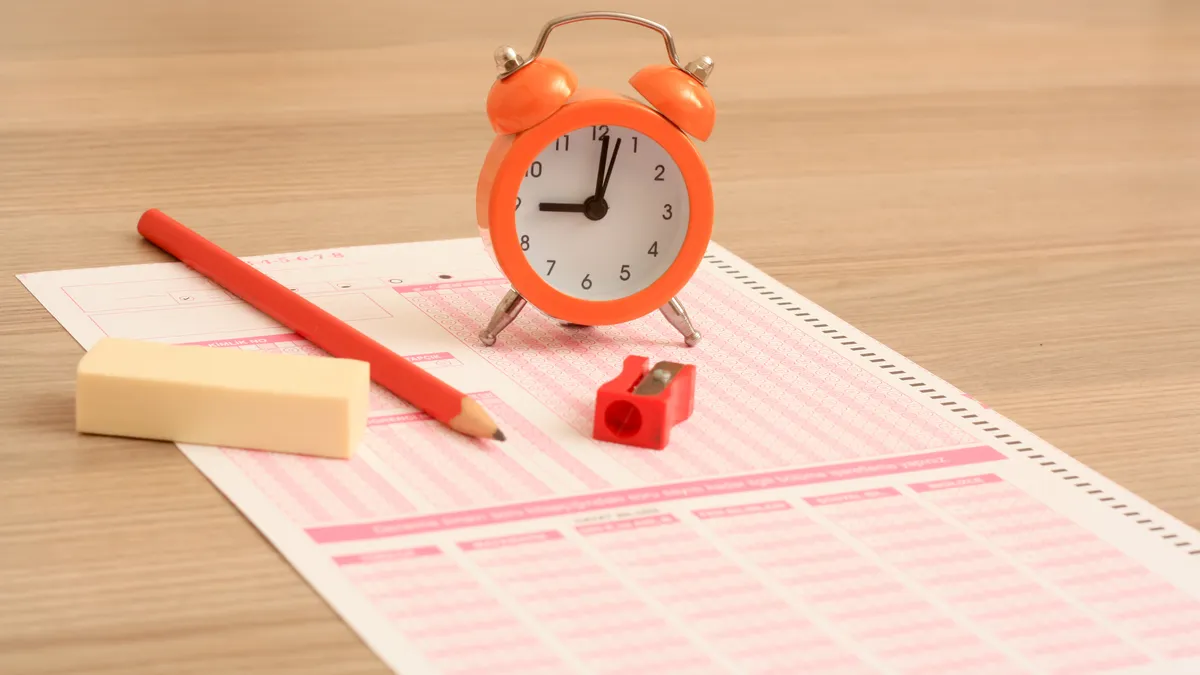When school buildings closed in March 2020 due to COVID-19, educators, sector experts and researchers all had their hunches: test scores would drop, gaps would widen, achievement would reverse. Since then, a plethora of surveys and anecdotal evidence have supported those theories. On Wednesday, the U.S. Department of Education confirmed them.
Since the 1970s, National Assessment of Education Progress long-term trend scores for 9-year-olds had been on an upward trajectory. Aside from insignificant decreases here and there, results were on the overall incline. That changed during the pandemic, reversing progress and setting students back to performance levels last seen two decades ago.
The declines spanned nearly every race and income level in the age group.
However, outcomes were particularly bad for the lowest-performing students. Those who fared well despite remote learning reported having higher levels of access to a learning device, a quiet place to work and a teacher available to help them with math or reading nearly every day.
Still, scores for the highest-performing students dipped, something that hadn’t happened in a decade.
Here are seven charts to help you better understand the impact of COVID-19 on students:
Math scores drop significantly for the first time
Reading scores see first steep drop since 1980s
Overall, scores in math and reading for 9-year-olds told a similar story — one of declines. Nine-year-old students saw, for the first time ever, a significant decline in math scores and the most significant decline since the 1980s in reading. In reading, there was a 3-point drop from a score of 212 in 1988 to a score of 209 in 1990. The drop seen during the pandemic was steeper, with a 5-point drop from 220 in 2020 to 215 in 2022.
Both highest and lowest-performers’ math scores dropped, widening a pre-existing gap
Both highest and lowest-performers’ reading scores dropped after years of high performers improving scores
Declines were present regardless of achievement level, still widening the gap between the lowest and highest performers. In the past few years, the gaps in NAEP scores between the lowest and highest performers were widening as a result of the highest performers staying stagnant or improving, while the lowest performers sporadically increased or declined.
However, the COVID-19 pandemic led even the highest performers’ scores to decline. The gap widened instead because the lowest performers declined at a steeper rate than their counterparts.
Scores decline most for Black students in math
Scores dropped across race, although the declines were exacerbated especially for Black students in math. Black students saw a 13-point decrease, almost three times the size of the decline for White students, who dropped by 5 points. In reading, scores for Hispanic, White and Black students fell by 6 points.
Students behind grade level compared to pre-pandemic
While the latest scores show a downward trend for 9-year-olds in the winter of 2022, more informal and recent surveys of schools at the end of the 2021-22 school year suggest students overall may be catching up. According to a survey conducted by the National Center for Education Statistics, while 50% of students were behind in at least one subject at the start of the 2021-22 school year, that percentage dropped to 36% by the end — the same percentage of students typically lagging in at least one subject at the start of a pre-pandemic school year.
More schools relied on remedial and high-dosage tutoring
Districts have been trying a host of strategies to continue catching students up. The most common have been high-dosage tutoring and remedial instruction, with accelerated instruction a less popular option.
However, assessment experts and educators agree efforts for recovery must be ongoing.
NAEP results for 13-year-olds are expected in spring 2023.






 Dive Awards
Dive Awards





